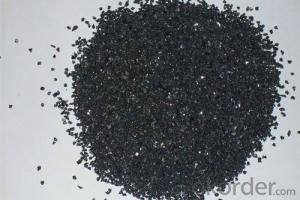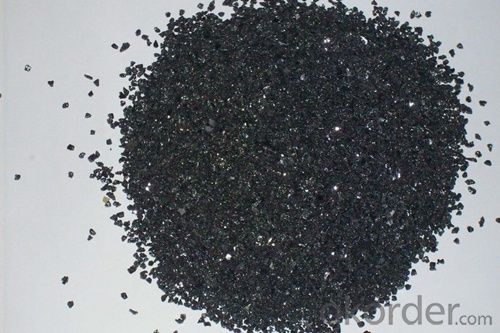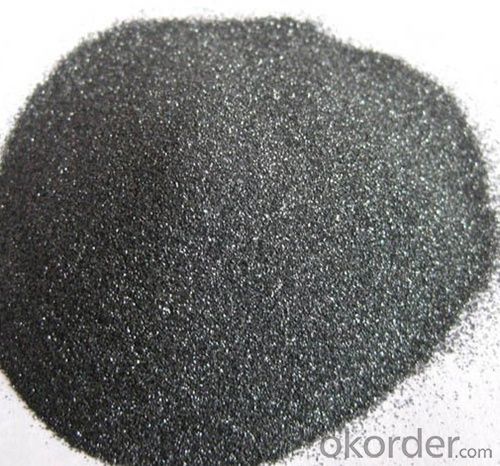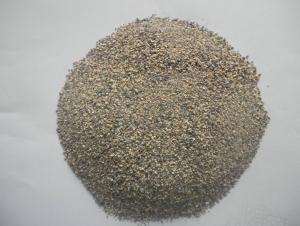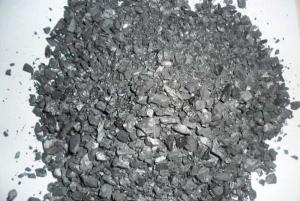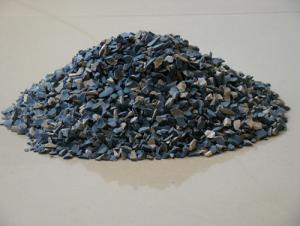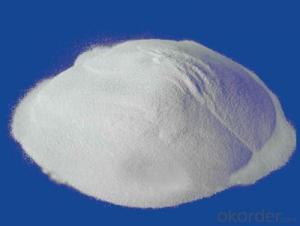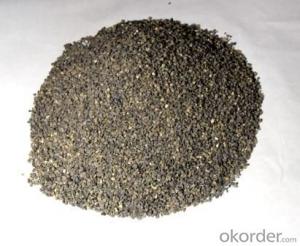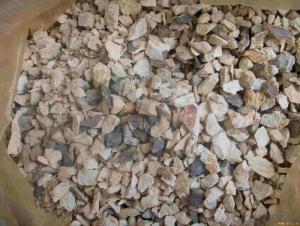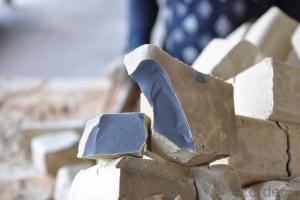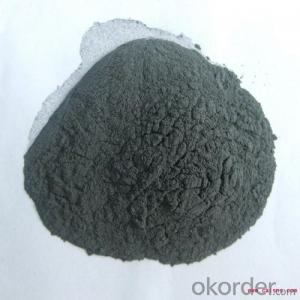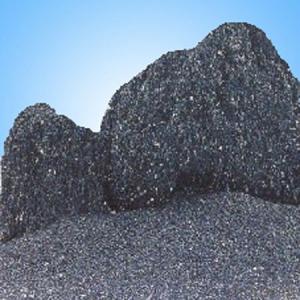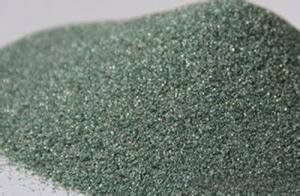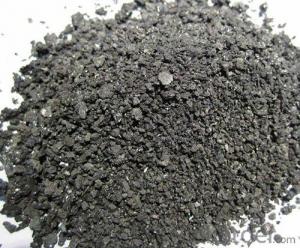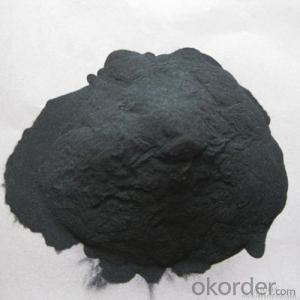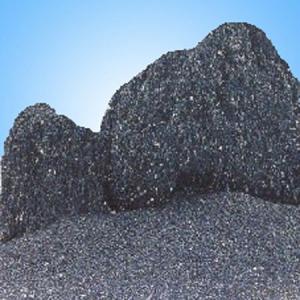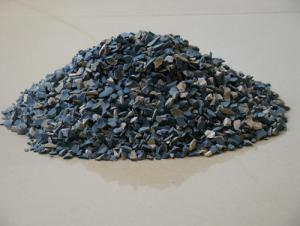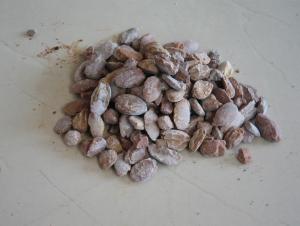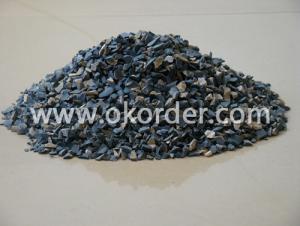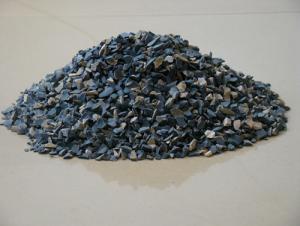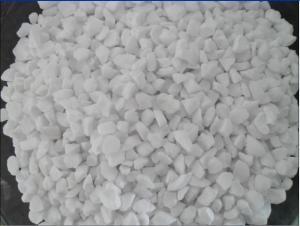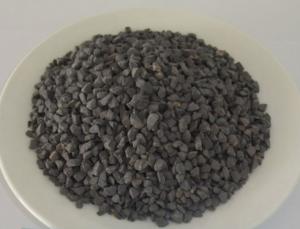Raw Materials for Refractory:Green Silicon Carbide/Carborundum Grit Particle Abrasives
- Loading Port:
- China main port
- Payment Terms:
- TT OR LC
- Min Order Qty:
- 25 m.t.
- Supply Capability:
- 2000 m.t./month
OKorder Service Pledge
OKorder Financial Service
You Might Also Like
Abrasives Raw Material Green Silicon Carbide/Carborundum grit particle
1. Description:
Green silicon carbide is produced in the same way as Black silicon Carbide
except for some differences in raw material. Silicon carbide is an extremely hard
material (Mohs hardness 9.4), is chemically inert and does not melt. Silicon Carbide
has a high thermal conductivity, a low coefficient of thermal expansion, is thermal
shock and abrasion resistant and has strength at high temperatures.
2. Sizes:
Grits: F#8, F#10, F#12, F#16, F#24, F#30, F#36, F#40, F#46, F#54, F#60,
F#70, F#80, F#90, F#100, F#120, F#150, F#180, F#220
Powder: F#230, F#240, F#280, F#320, F#360, F#400, F#500, F#600,
F#800, F#1000, F#1200, F#1500, F#1800, F#2000
3. Chemical & Physical features:
Chemical compositions | Physical properties | ||
Items | Value of specification (%) | Items | Property |
SIC | 99.1min | Color | Green |
Melting point | 2250°C | ||
F.C. | 0.20max | Hardness | 9.5 |
Bulk density | ≥1.38g/cm3 | ||
Fe2O3 | 0.20max | Real density | 3.9 g/cm3 min |
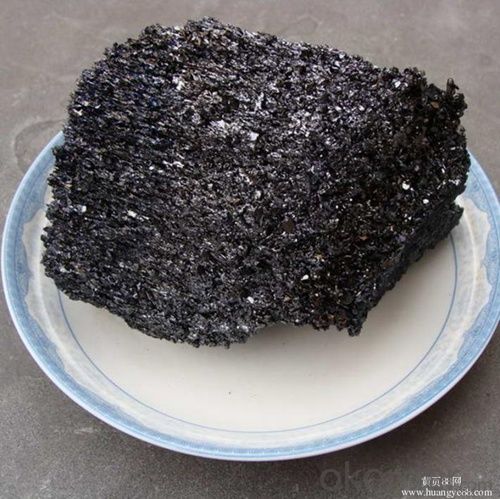
- Q: What are the refractory materials above 1000℃
- It is a piece of cake to meet your requirement, anyway you can try unshaped castables like corundum and other refractory materials used in steelmaking which are above 1500℃ basically .
- Q: What are included in roof thermal insulation fireproofing material?
- Aluminium foil, bubble, aluminium foil/air bubbles/fireproofing aluminium foil thermal insulation material, fireproofing bubble thermal insulation material, fire?retardant thermal insulation material, thermal insulation construction materials, aluminum foil insulation material.
- Q: How should fireproof building materials be ranked?
- According to our national standard GB8624-97, the combustion performance of building materials are divided into the following levels: A class: Incombustible building materials: the material is almost incombustible. B1 class: Flame-retardant building materials: they are better in fire retardation. It is non-combustible when meeting open fire in the air or under high temperature, and it is difficult for the fire to spread quickly. Besides, when the fire source is removed, combustion stops immediately. B2 class: Combustible building material: It has certain fire retardation. In case of open fire in the air or at high temperature, it will immediately burst into flames, and easily lead to the spread of fire, such as the spread to wooden pillars, timber roof truss, timber beams, wood stairs, etc. B3 class: Flammable building material: It has no fire retardant effect at all, but is highly flammable with high fire risk. Hope my answer can be accepted.
- Q: What are the differences between first-level fire-resistant materials and second-level fire-resistant materials?
- 1, these refer to fire resistance rating of building materials. 2, As for steel, elements that used in different parts should reach different duration of fire resistance according to fire resistance rating. For example, fire resistant pillars of first level can endure fire within 3 hours; the second level, 2.5 hours; the third level, 2 hours. With respect to beams, three levels of fire resistance are included.
- Q: What kind of refractory decorative board has good quality?
- The unique design and personalized style of well-known brand "transit" rank highest in the field of domestic refractory slab. It is one of the largest manufacturers of high pressure decorating refractory slab in China. The production base covers an area of 40,000 square meters and the annual output is 4 million. It passes the test of Quality Supervision and Inspection Center of National Fire Protection Building Material and ISO9002 certification. The products pass international standards such as 4586, the United States NEMA and so on.
- Q: Fire insulation and fireproof insulation board materials What is the difference in performance?
- What is the difference between fireproof insulation board and fireproof materials in their performance? Fireproof Materials prevents burning through insulating while others by chemical reactions. The overall heat conductivity coefficient of Insulation materials are generally lowered by thermal conductivity of the material itself and the structure of the material. Inorganic active insulation material uses ordinary cement, insulation stone, calcium powder, platycodon grandiflorum as the main raw material, produced after numerous tests with advanced production technology and chemical technology. Products features fire retardant,anti-aging properties and stable performance, low deformation coefficient, environmentaly friendly, compatible with the wall base layer and plastering layer. It has good security and stability and is as durable as ordinary buildings. Strong fire resistance: Fire insulation board is made of inorganic materials (cement), fireproofing level reaching to A1. As it does not burn, it is fireproof.
- Q: What are the materials used in refractory material processing?
- Refractory materials generally refer to inorganic non-metallic materials with a refractoriness of more than 1580 degrees. It includes natural ore and a variety of products made by a certain process according to certain requirements. It has certain high temperature mechanical properties and good volume stability. It is the necessary material for all kinds of high temperature equipment. Ordinary refractories are often used brick, semisilica brick, clay brick, high alumina brick, magnesia brick etc..
- Q: What kinds of fireproof materials does the safe use?
- The fireproof materials of safe, copper is one of the most widely used material of locks for its good mechanical performance, corrosion resistance and processibility and beautiful colors.
- Q: Who knows the fire endurance of B-level fireproof doors and windows?
- Rock wool board of B-grade fireproof doors keeps 46mm in thickness, doors that are generally used in relatively common fire fighting access, while A-grade fireproof doors are generally used in machine rooms, warehouses, oil depots and other important fire fighting access and flammable and combustible pulbic places. B-grade fireproof doors are more widely used than A-grade fireproof doors.
- Q: Is there a worker in (Jigang refractory plant)?
- Units in this way, it is necessary to slowly boil it, wages will come up. You are a labor worker, and can not share with the stock system staff. There's a difference between salary and vacation.
Send your message to us
Raw Materials for Refractory:Green Silicon Carbide/Carborundum Grit Particle Abrasives
- Loading Port:
- China main port
- Payment Terms:
- TT OR LC
- Min Order Qty:
- 25 m.t.
- Supply Capability:
- 2000 m.t./month
OKorder Service Pledge
OKorder Financial Service
Similar products
Hot products
Hot Searches
Related keywords
